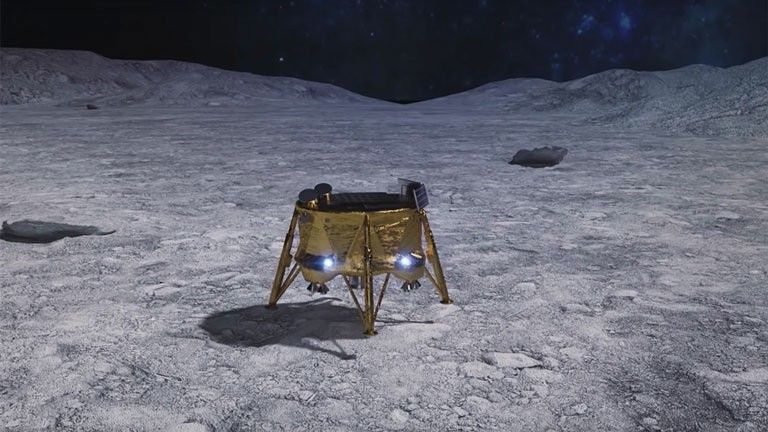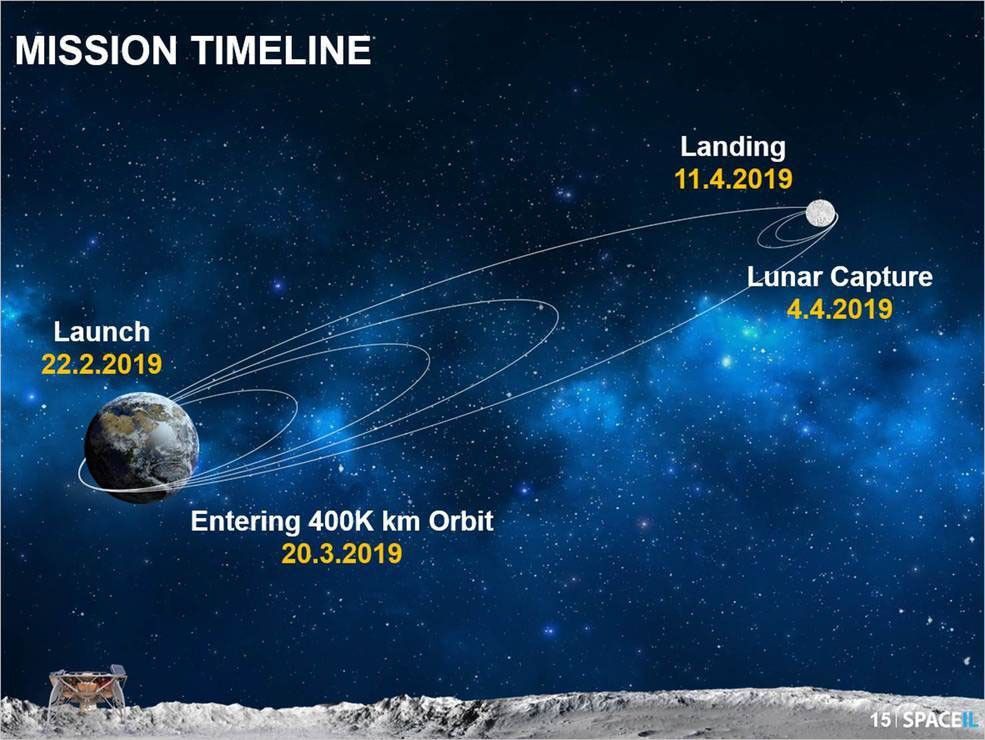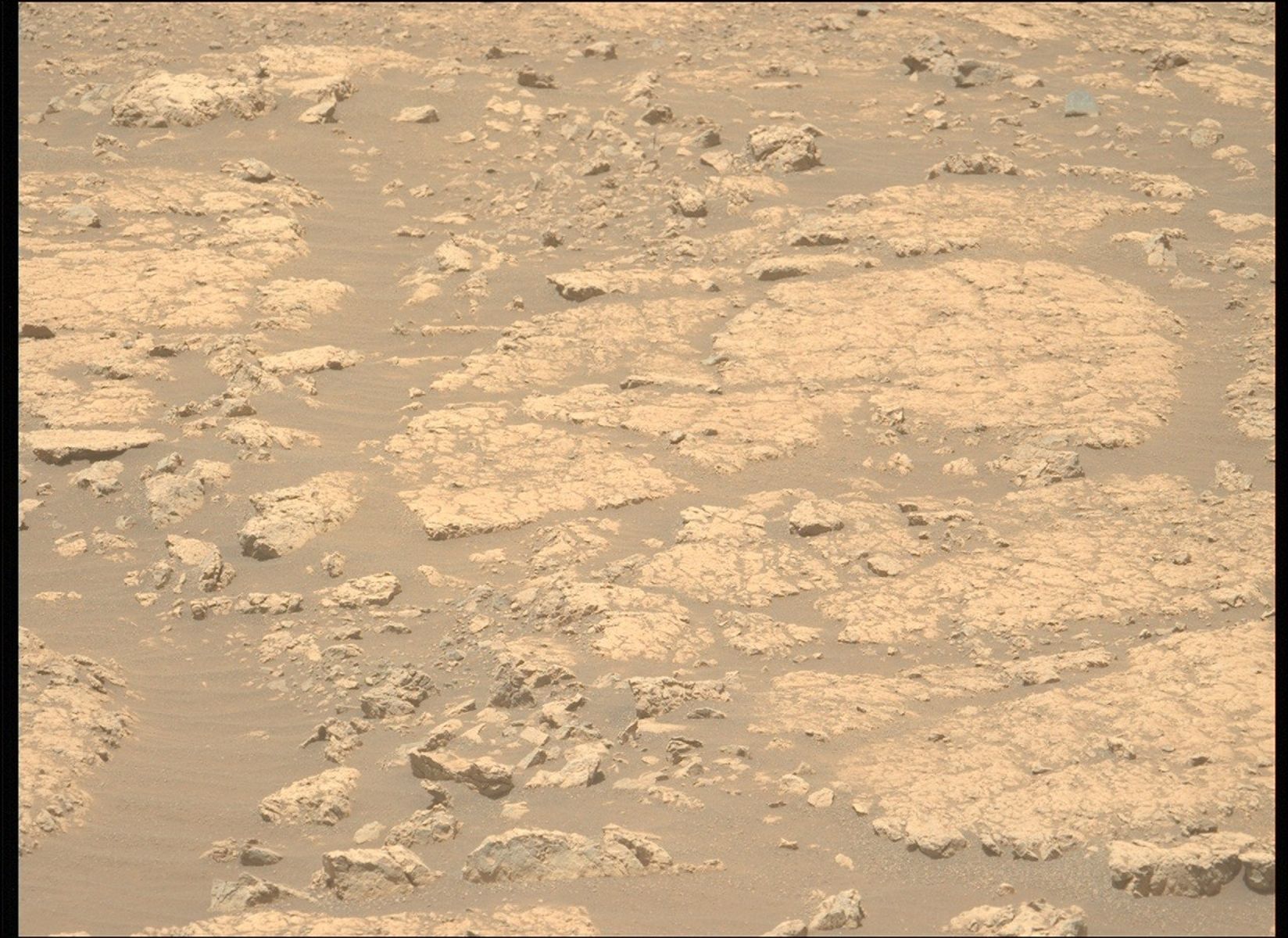Beresheet
Type
Launch
Target
Objective
Beresheet was Israel's first lunar mission and the first attempt by a private company to land on the Moon. The mission achieved lunar orbit, but was lost during an April 2019 landing attempt.
- NASA had installed a small laser retroreflector aboard the lander to test its potential as a navigation tool.
- Beresheet means "In the Beginning" in Hebrew.
| Nation | Israel |
| Objective(s) | Lunar Landing |
| Spacecraft | Beresheet |
| Spacecraft Mass | 1,300 pounds (585 kilograms) |
| Mission Design and Management | SpaceIL (Private Company) / Israeli Space Agency |
| Launch Date and Time | Feb. 22, 2019 / 1:45 UT |
| Launch Vehicle | SpaceX Falcon 9 |
| Launch Site | Cape Canaveral Air Force Station, Florida |
| Scientific Instruments | 1. Magnetometer 2. Laser Retroreflector |
Beresheet was about 5 feet (1 meter) tall by 7.5 feet (2.3 meters) wide with its landing gear and legs deployed. The lander separated first from the rocket, taking the long route to the Moon to save fuel by employing gravitational forces to propel itself. Beresheet slowly widened an elliptical orbit around Earth until it was captured by the Moon's gravity and ultimately commanded to descend.
Beresheet attempted to touch down on April 11, 2019 in an ancient volcanic field known as the Sea of Serenity (Mare Serenitatis in Latin). NASA’s Apollo 17 astronauts landed near this region on Dec. 11, 1972. The team lost contact with the spacecraft shortly before expected touchdown.

"While NASA regrets the end of the SpaceIL mission without a successful lunar landing of the Beresheet lander, we congratulate SpaceIL, the Israel Aerospace Industries and the state of Israel on the incredible accomplishment of sending the first privately funded mission into lunar orbit," NASA Administrator Jim Bridenstine said on April 11. "Every attempt to reach new milestones holds opportunities for us to learn, adjust and progress. I have no doubt that Israel and SpaceIL will continue to explore and I look forward to celebrating their future achievements."
SpaceIL was established in 2010 to tackle the Lunar X Prize, a competition sponsored by Google that challenged private companies to land a spacecraft on the Moon. Though no company was able to meet the competition deadline, prompting Google to end it with no winner in March 2018, the Israeli team pressed on.
Additional Resources
- National Space Science Data Center: Beresheet
Primary Sources
Shekhtman, Lonnie. "NASA is Aboard First Private Moon Landing Attempt." NASA Solar System Exploration, https://solarsystem.nasa.gov/news/856/nasa-is-aboard-first-private-moon-landing-attempt/.
"Update on First Private Robotic Spacecraft Attempt at Moon Landing." NASA.gov, 11 April 2019, https://www.nasa.gov/feature/update-on-first-private-robotic-spacecraft-attempt-at-moon-landing.


































